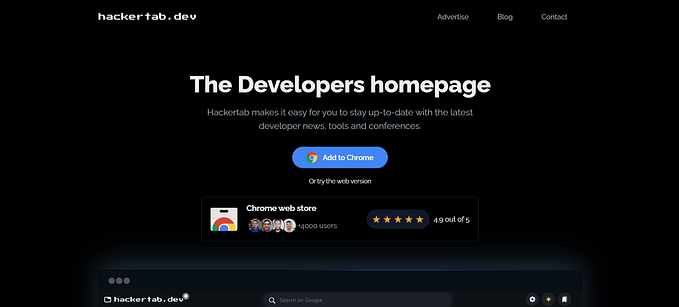What systems have the most lines of code, and why?

Android
Let’s start with the famous operating system Android. Android is a complex operating system that calls for many lines of code to function correctly. One of the most significant challenges Android developers have faced over the past few years has been keeping up with the ever-increasing code complexity. There is a possible positive connection with employing many lines of code in Android applications, even though this practice is notoriously difficult. In this essay, we will explore the advantages of writing Android application code with many lines of code, and I will also provide several examples of that type of code, such as Gradle.
The Complicated Nature of the Android Operating System
The large number of interdependencies incorporated into the Android source code contributes to the increased complexity of the Android platform. Its complexity extends to the platform application programming interfaces (APIs), which are used to interface with the code. To generate an application capable of performing its intended functions, developers need to understand the complex relationship between the platform's application programming interfaces (APIs) and the code. Because they must understand the repercussions of each interdependency in the code, developers may find it difficult to debug any problems while working on the development process because any difficulties can be problematic.
The Benefits of Using a Large Number of Lines of Code
Users can be provided with a more comprehensive user experience by utilizing many lines of code, which can be used to deliver the user experience. When developers have many lines of code to work with, they have access to more features, ultimately resulting in more comprehensive apps. Increasing the number of lines of code in a program will help reduce its complexity and make it more stable. By using more lines of code than they typically would, developers can create more dependable applications with fewer bugs and a lower risk of crashing the application entirely. This is made possible by using more lines of code than they usually would. In addition, the scalability of programs can be improved by having many lines of code. This makes it simpler for programmers to modify already-existing applications so that they can support the addition of new features or meet additional requirements.
The total amount of code that is utilized in Android.
Android was designed to run on mobile devices. Android is an open-source mobile operating system constructed on the Linux kernel. It is a complicated system comprising multiple layers of programming and applications written in various languages, such as C, C++, Java, Kotlin, and other languages. Because it must process such a large amount of data and so many different components to provide a user experience that is fluid and reliable, the Android operating system contains a high number of lines of code. This is because Google developed it.
GUI
The graphical user interface (GUI) that Android provides for consumers to engage with is one of the essential features of the platform. Developers use various computer languages and technologies to construct a responsive and engaging user interface (UI). For instance, the creation of buttons and other user interface elements in Android applications is accomplished through code written in XML and Java. XML is a markup language. Developers use XML to define the layout and properties of UI elements, while Java code is used to determine the behavior of the elements.
In addition to the user interface, Android comes with a vast selection of APIs and built-in libraries that may be utilized by programmers in the construction of their applications. For instance, the Android framework contains a messaging system known as Firebase Cloud Messaging. This messaging system allows developers to utilize their applications to receive messages from servers using the Android framework. The Android framework has built-in networking features that developers can use to interface with APIs and services provided by third parties.
Memory Management
Memory management constitutes yet another essential component of Android’s programming. Because mobile devices have a certain amount of storage space and processing power, developers must employ effective memory management strategies while developing applications. Even though a garbage collector manages Android’s memory, developers still need to optimize their code to use as little of the system’s memory as possible.
Gradle
A Build Automation System Known as Gradle.
Gradle is an open-source build automation system that may be used to automate the development of software applications. This can be accomplished with the aid of the Gradle software package. Gradle is a very adaptable and robust build system that may be utilized in any setting imaginable due to its adaptability and capability. In addition to automatically creating packages, running tests, and compiling source code, it can perform many other tasks related to developing an application. Developers can expand the functionality of Gradle via the installation of additional plugins or the deactivation of those already present. Because of its adaptability, Gradle may be used to build various applications, ranging from accessible command-line utilities to complex mobile programs. This includes both desktop and mobile software.
An Illustration of the Gradle Build System
It’s a powerful tool that allows developers to automate the process of building and deploying software applications. The Gradle software package provides developers with a simple and flexible way to automate the entire build process.
One of the key benefits of using Gradle is that it enables developers to automatically compile source code, run tests, and produce packages. For example, Gradle can compile and package a Java application into a JAR file that can be easily deployed to a production environment. Additionally, Gradle can be used to automate the process of testing the application code, including unit tests, integration tests, and functional tests. This can save developers time and effort and ensure the application is thoroughly tested before deployment.
The flexibility of Gradle means that developers can use it to automate almost any task involved in developing and deploying their software applications. In addition to these core features, Gradle allows for the execution of various other charges connected with the process of building applications. For instance, Gradle can generate documentation, build Docker images, deploy the application to cloud environments, and much more.
Here’s a small example of how Gradle can be used to generate documentation for a Java application:
Plugins {
id 'java'
id 'org.asciidoctor.jvm.pdf version '1.6.3'
}
Repositories {
Jcenter()
}
Dependencies {
Implementation 'com.google.guava:guava:29.0-jre'
Asciidoctor 'org.asciidoctor:asciidoctorj-pdf:1.6.0-alpha.16'
}
task generateDocumentation(type: JavaExec) {
main = 'org.asciidoctor.cli.Main'
args = ['-r', 'asciidoctor-diagram', '-b', 'pdf', '-D', 'build/docs', 'src/docs/index.adoc']
}
build {
dependsOn generateDocumentation
}In this example, we use Gradle to generate PDF documentation for a Java application using the Asciidoctor library. We’ve defined a task to run the Asciidoctor command-line tool with the appropriate arguments to create a PDF file from the Asciidoc source file located at src/docs/index. doc. Gradle will automatically download the Asciidoctor library and run the generateDocumentation task when we run the build task.
Linux
Linux is an open-source operating system that powers various devices, including servers, supercomputers, smartphones, and other consumer electronics and household appliances. Because of its well-deserved reputation for dependability, safety, and adaptability, it is a popular option among companies and private persons. Let’s look more in-depth at the components that make up Linux and its structure.
Complexity of Linux
Linux is an advanced operating system consisting of millions of code lines. It offers support for a wide variety of hardware and software configurations, networking capabilities, and security features, all of which contribute to its complexity as a result of the extensive range of features and functionalities that it delivers. Thousands of developers have contributed to creating the Linux kernel, which comprises more than 27 million lines of code.
Code Examples:
Kernel code — The Linux kernel is written primarily in the C programming language, with some components written in assembly language. Here’s an example of some kernel code.
void tasklet_schedule(struct tasklet_struct *t)
{
unsigned long flags;
spin_lock_irqsave(&tasklet_vec_lock, flags);
__tasklet_schedule(t);
spin_unlock_irqrestore(&tasklet_vec_lock, flags);
}This code shows how task sets (short, non-preemptible functions that can run in an interrupt context) are scheduled in the kernel.
Linux Architecture:
Linux’s architecture is modular, meaning its parts are separated into structures. The kernel is the central component of Linux and is responsible for overseeing the system’s hardware, memory, and processes.
The GNU C Library (glibc)
is one of many system libraries and tools that sit atop the kernel and provide crucial support for program execution. Users of Linux have the option of using either a graphical desktop environment or a command line interface.

Takeaway
Using many lines of code can help the development process in many ways, but finding a balance between functionality and how easy it is to change is essential. Developers should write clean, efficient, and easy-to-read code to ensure their software is easy to maintain and scale. This can be done with the help of Gradle’s build automation system, which lets developers automate routine tasks so they can focus on writing good code.
Developers also have to deal with the fact that Android and Linux are very complicated. But with the right way to code and powerful development tools, developers can use this complexity to make new and powerful software. For instance, in Linux, developers can use many libraries and system utilities to create complex apps with little work.
Using many lines of code in software development has benefits beyond functionality and scalability. Robust software can improve the user experience and make customers happier, leading to more sales and customer loyalty. To ensure long-term success, developers and companies must focus on creating high-quality software that is easy to maintain.
Many lines of code in software development can be helpful in many ways, but it’s essential to be careful and thoughtful about how you go about it. Developers can make powerful and easy software to maintain by using powerful development tools, following best practices, and putting clean and efficient code at the top of their list.









